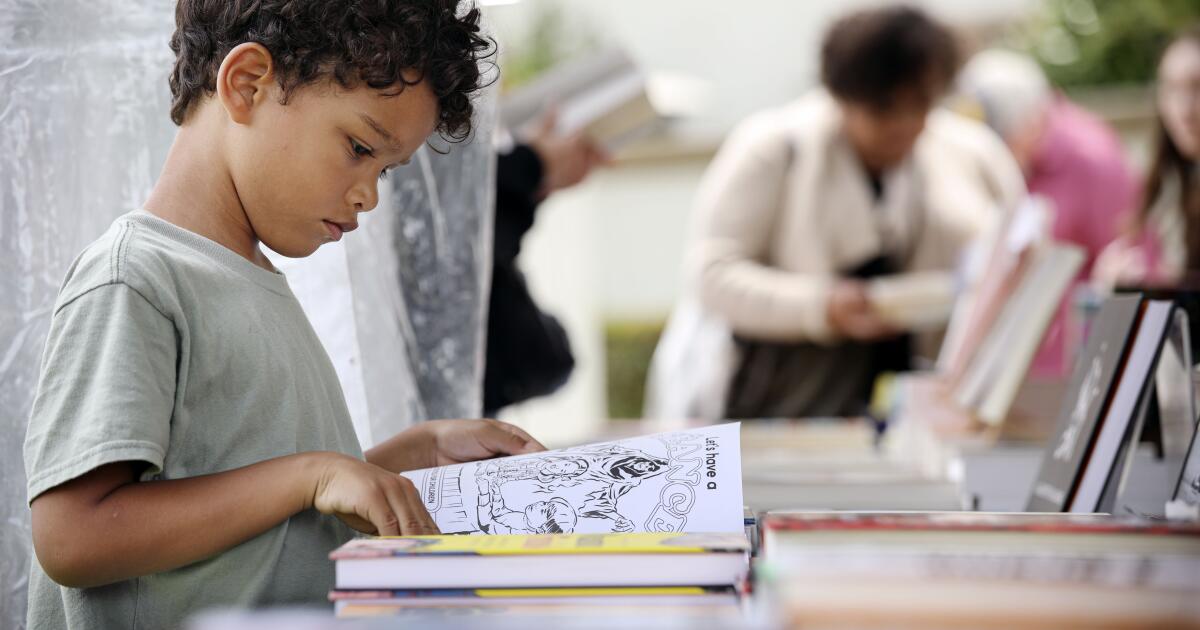
Ellis is a San Diego State University Health Sciences librarian and lives in La Mesa.
When people hear that you’re a librarian, one of the first questions you get asked is, “What’s your favorite book?” My favorites include Aldous Huxley’s “Brave New World” and Mikhail Bulgakov’s “The Master and Margarita.” On the surface, these books seem incredibly different. One is a dystopian sci-fi novel about the evils of end-stage capitalism, and the other is about a writer, his mistress and Satan in Soviet Moscow. What both have in common, though, is that both have been either censored or outright banned.
Simply put, book challenges prevent the spread of new ideas. According to the American Library Association’s Office of Intellectual Freedom, books are most commonly challenged for being “sexually explicit” or containing “offensive language.” Books are increasingly being banned for confronting racism and challenging anti-LGBTQ rhetoric. These books are usually written by and about people of color and LGBTQ people. Others are challenged for topics of abuse, sexual assault, disease and death.
Overwhelmingly, these books are written for children, teenagers and young adults. This demographic is in the most need for accessible books about tough topics. The books on this year’s top 13 most challenged list address abuse, racism, homophobia and more. For young people who deal with these issues everyday, these books are a lifeline, a catharsis for their pain. For adults, access to a broad range of topics expose us to people and ideas we have yet to come across. For instance, many White Americans learned about the full breadth of structural racism in the United States in 2020. The next year, the American Library Association reported that four of the 10 most commonly banned books of 2020 were about racism and/or police violence.
Efforts that challenge books are not a new phenomenon. Over a decade ago, when I was in elementary and middle school, I experienced censorship. In fifth grade, my teacher required students to get parental permission to read Judy Blume’s “Are You There God? It’s Me, Margaret.” for a book report because of its “mature” themes. I assume that this is referring to menstruation, a famously salient issue for most 10-year-old girls. In sixth grade, Yann Martel’s “Life of Pi” was removed from the summer reading list for violence.
These cases may not seem like censorship, but they are. Informing students that a classic novel contains “mature” content or removing a novel from the summer reading list is censorship. They discourage people from reading new materials and challenging old ideas. This is not only unacceptable but undemocratic.
The problem that I have faced, especially as a librarian originally from Texas, a state with over 1,000 challenges to books from Jan. 1 to Aug. 31, is the misperception that this is purely a red state or conservative issue. While I, like most younger people from conservative states, have experienced more than my fair share of challenges, I didn’t find a literary haven in California. Book bans are happening here, too.
In 2020, Burbank schools removed five novels from reading lists for containing harmful stereotypes about Black people. Temecula, Ramona and Colton school boards have challenged and removed books from classrooms and school libraries, primarily for having LGBTQ content and sexual violence. Locally, protesters in Rancho Peñasquitos checked out and kept books from the Rancho Peñasquitos Library’s Pride Month display because they were “inappropriate for children.” In response, the community donated books and thousands of dollars to the San Diego Public Library to expand its LGBTQ programming and resources.
From Oct. 1 to 7, we celebrated Banned Books Week. I want readers to do one thing: read and share banned books. Find out if your favorite has been banned (spoiler: It probably has). Read one that you haven’t before. Talk to your friends, family and colleagues about book bans.
Because here is the thing: Book challenges almost always fail. News media pick up the stories and broadcast them to the community. Libraries and bookstores create displays, write blog posts, host events and issue proclamations. Libraries are increasing access to banned books. Bans get readers interested in books and authors that they would’ve never heard of otherwise. People become excited about reading again and find new books. Because, as Bulgakov’s devil famously said, “manuscripts don’t burn.” Rather, even when people try to hide them, books shine.





